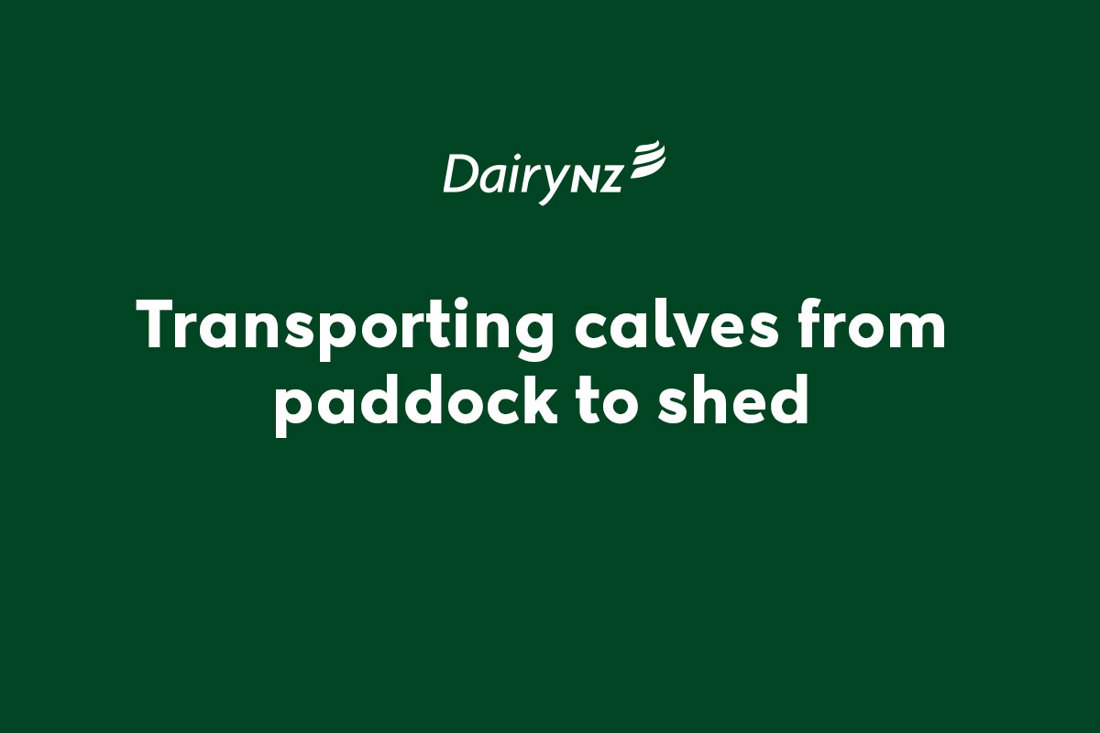Collecting Calves
2 min read
Successful calf rearing starts as soon as the calf is born, requiring careful attention to safety, identification, and health protocols during collection. Good practice is to pick up newborn calves from the paddock twice daily to bring them to a warm, clean environment and ensure they get enough gold colostrum in the first hours of life.
Good practice is to pick up newborn calves from the paddock twice daily to bring them to a warm, clean environment and ensure they get enough gold colostrum in the first hours of life.
The trailer used for picking up calves should be cleaned and disinfected regularly. To make transport safer for calves, AstroTurf or another easily cleaned, non-slip material can be used in the bottom of the trailer. Don't overload the trailer – there should be enough room so that all calves can lie down comfortably. Make two trips if there is not enough room. Calves move around easily, so travel at a walking pace.
Manage your springer mob to ensure pugging damage is minimised and cows have clean pasture to calve on. Cows should be removed from intensively grazed winter paddocks at least two weeks before their expected calving date. Choose paddocks that have good shelter and are close to the milking shed. Avoid calving in muddy conditions to decrease the risk of death and infections for both the cow and the calf. If a calf is born on crop, promptly collect and remove the calf and cow to a drier area.
The below video shows how to transport calves to the shed carefully and correctly.

When moving cows and calves don’t turn your back on a newly calved cow. Even cows that are usually placid can become aggressive after calving. Keep the calf between you and the cow and don’t take any dogs or children into the calving paddock.
When lifting calves, bend your knees and keep your back straight. Get assistance if needed. Sprains and strains are common injuries on dairy farms, especially during the busy calving season.
Record all births and make sure you know the recording procedures for your farm prior to calving.
Check the system used on your farm for matching cows and calves. If in doubt, checking the breeding information can help; is the cow due? When was the mating date? Does the breed match the bull/sire? LIC also offers parentage/DNA testing.
Temporary identification tags can be used for newborn calves in the paddock, e.g. elastic neckbands with tags. Once back in the shed, proper tags can be put on in an environment that is clean and dry. If tagging in the paddock, ensure that the calf’s ear is clean, dry and disinfected.
Calves that had a difficult birth or that are born in poor weather are more likely to have trouble standing and suckling. Identify high risk calves as soon as possible, record their numbers, and bring them to the calf shed to get warm and have a good feed of colostrum.
To prevent navel infection, spray navels of newborn calves in the paddock and on arrival at the shed. Completely spray or dip the navel with iodine. Don’t use teat spray as the glycerine in teat spray can keep navels soft and moist.

Now’s the perfect time to check in, plan, and set up for a strong season. We’ve pulled together smart tips and tools to help you stay ahead all winter long.
Whether you prefer to read, listen, or download handy guides, we’ve got you covered with trusted tools to support your journey every step of the way.
Put our proven strategies and seasonal tools to work. Boost production, support animal health and watch your profits hum.
Tools that are backed by science, shaped by farmers and made for this season.
That’s Summer Smarts.